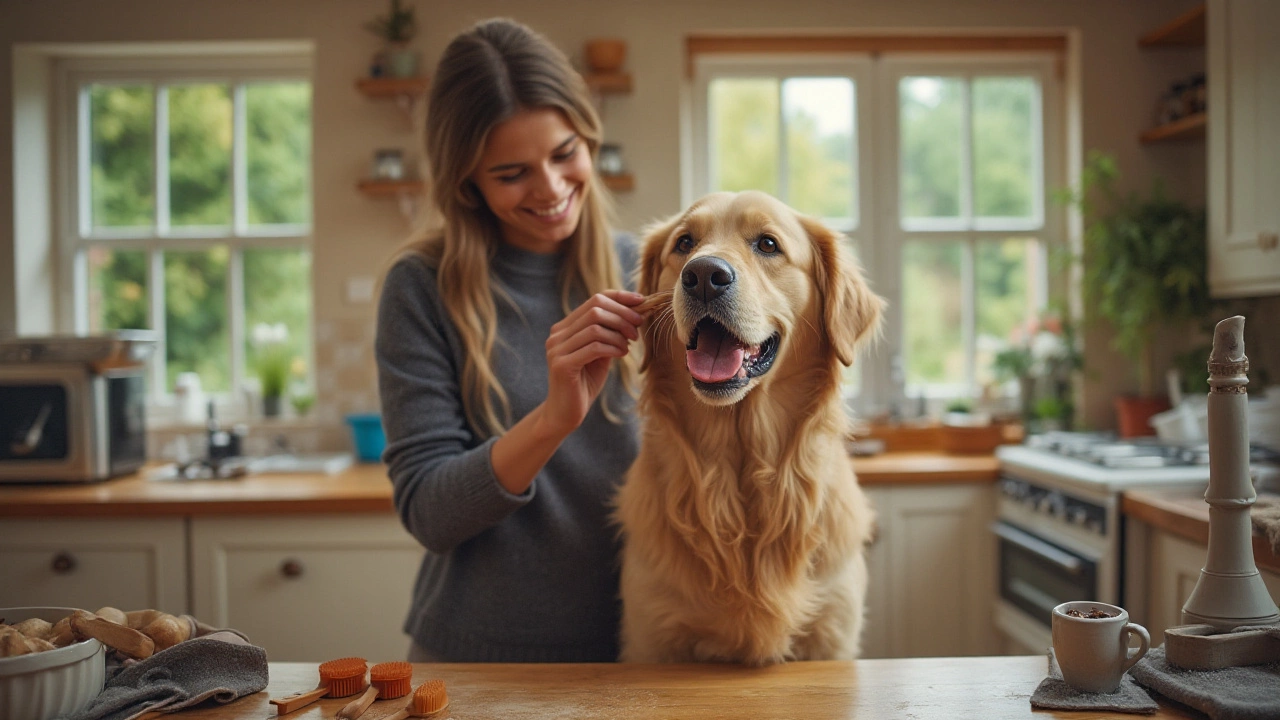Dog Grooming Safety: Essential Tips for a Happy, Healthy Pup
Grooming isn’t just about looking good – it’s a chance to check your dog’s health and keep them comfortable. If you skip safety steps, a simple brush can turn into a painful accident. Below are the basics you need to make grooming a smooth, safe experience for both of you.
Prep Your Space and Tools
Start by creating a calm area. Choose a quiet room, lay down a non‑slip mat, and keep the space free of toys or cords that could get tangled. Have everything you need within arm’s reach – brush, comb, nail clippers, ear cleaner, and a towel. Using the right tools matters: a soft‑bristle brush for short coats, a slicker brush for thick fur, and rounded‑edge clippers for nails. Dull clippers pull at the nail and hurt your dog, so sharpen or replace them regularly.
Check each tool for damage before you begin. Cracks in a brush can snag fur and cause skin irritation. If a tool feels loose, set it aside – safety first.
During the Grooming Session
Begin with a brief walk or play session to burn off excess energy. A relaxed dog is easier to handle. When you start brushing, go with the grain of the coat and use gentle strokes. If you hit a tangle, pause, apply a little dog‑safe conditioner, and work it out slowly. Never yank – pulling can tear skin and lead to bleeding.
When it’s time for a bath, use lukewarm water and a dog‑specific shampoo. Human shampoos strip natural oils and can cause itchy skin. Rinse thoroughly; leftover soap can cause irritation later. After the bath, wrap your pup in a towel, pat them dry, and keep the dryer on a low, warm setting if they tolerate the noise.
Ear cleaning is often overlooked but vital. Use a vet‑approved ear cleaner and a soft cotton ball. Never push anything deep into the ear canal – you could damage the eardrum. If you see redness, discharge, or a foul smell, skip the cleaning and call your vet.
Trimming nails is another spot where accidents happen. Press the paw gently to extend the nail and watch for the pink “quick” inside the nail. If you can see the quick, cut just a little at a time. If you’re unsure, ask a professional to show you the right length.
Watch your dog’s body language throughout. Signs of stress include panting, tucked tail, or trying to pull away. If the stress level rises, take a break, give a treat, and resume later. It’s better to finish a few tasks over several short sessions than to force a full grooming in one go.
When you’re done, reward your dog with praise and a special treat. Positive reinforcement makes future grooming easier because your pup learns that it ends with good things.
If you’re not comfortable with any part of grooming – especially clipping hair or cutting nails – book a professional groomer. Reputable groomers follow strict safety protocols, use proper restraints, and can spot health issues you might miss.
Taking a few extra minutes to set up, use the right tools, and read your dog’s signals makes grooming safe and stress‑free. Your pup will thank you with a wagging tail and a shiny coat.

How to Keep Your Dog Safe During Grooming Sessions
Grooming is an essential part of a dog's health regimen, contributing not only to their cleanliness but also to their physical and emotional well-being. This article addresses safety concerns during grooming sessions, offering concrete tips and insights on how to create a secure and comfortable environment for your furry friend. It delves into the most common grooming mishaps and how to avoid them, as well as highlights the importance of understanding your pet's unique needs. By following these guidelines, you can make sure your routine grooming is a safe and enjoyable experience for both you and your dog.
View more